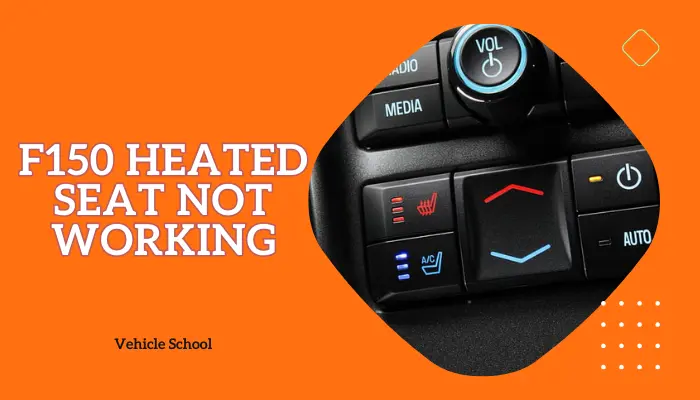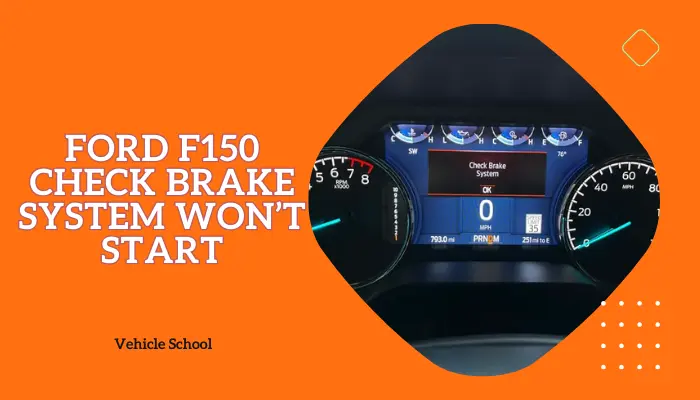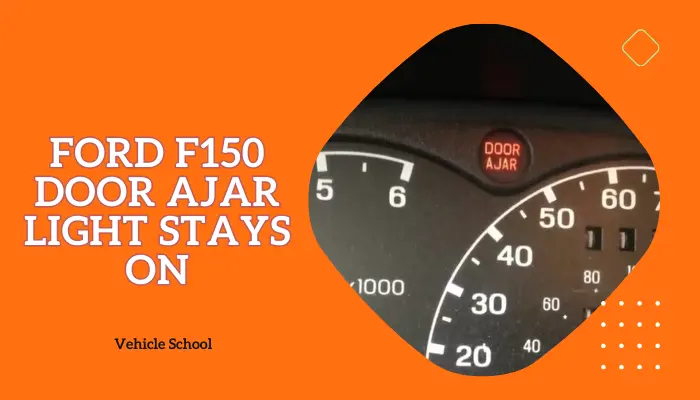Your F-150 is getting bad gas mileage due to bad oxygen sensors, clogged fuel injectors, ignition system wear, and tire issues. Oxygen sensors monitor oxygen levels in the exhaust and can cause low mileage when they’re faulty. Clogged fuel injectors disrupt proper fuel spray, leading to incomplete combustion and reduced efficiency.
Components like spark plugs, ignition coils, and wires wear out over time, affecting how well the engine burns fuel. Larger tires or incorrect tire pressure create more rolling resistance, making the engine work harder and use more fuel.
To improve gas mileage Swap out oxygen sensors, clean the fuel injectors, and fix the ignition system. Cleaning or replacing air filters will increase fuel economy as well.
If your truck is using too much gas, look into replacing the catalytic converter or checking the ECM. Another thing to note is that driving style and throttle control can significantly impact MPG.
For your convenience, I’ve compiled this comprehensive list of potential reasons along with step-by-step solutions to improve the fuel economy of your F150. Let’s get started on minimizing your F150’s MPG.
Why Is My F150 Getting Bad Gas Mileage?
Now that you know if your Ford F150 is guzzling more gas than usual, many factors can contribute to this sudden spike in fuel consumption.
I’ve explained all the causes in this section so you can pinpoint the exact cause. Here’s why your F150 is getting bad gas mileage:
1. Bad Oxygen Sensors
Oxygen sensors monitor oxygen levels in the exhaust and send this information to the ECM.
When these sensors malfunction, the ECM can misinterpret exhaust data, leading to an incorrect air-fuel mixture.
This can make the engine run either too rich or too lean, affecting fuel combustion efficiency and ultimately fuel economy.
In fact, a drop in gas mileage is often a key indicator of an O2 sensor issue, so if you notice that, you might be in for other major Ford F150 oxygen sensor problems.
2. Clogged Injectors
Fuel injectors work like precision fuel sprayers in your car’s engine.
Over time, gunk builds up in them, affecting how they spray fuel.
This messes up the air-fuel mixture, causing inefficient fuel burning.
Clogged injectors lead to bad-smelling exhaust and worse gas mileage in your truck.
3. Faulty Mass Air Flow Sensor
The MAF sensor keeps tabs on how much air is going into the engine, which helps the ECM figure out the right amount of fuel to use.
If the MAF sensor goes wonky, it sends the wrong info about the incoming air.
This messes with the ECM’s ability to get the air-fuel ratio right, causing less effective burning and possibly messing up fuel economy.
4. Worn Out Ignition System
Issues with spark plugs, ignition coils, or spark plug wires can mess up the ignition.
When combustion isn’t complete, there’s unburnt leftover fuel in the exhaust, making the exhaust gasses too rich.
This not only hurts fuel economy but also boosts emissions.
5. Clogged Air Filter
When your air filter gets clogged, it chokes off airflow to your engine.
This can slash your gas mileage by up to 10% and mess with how smoothly your engine runs.
Engines need oxygen for proper fuel burning.
Reduced airflow messes with power, speed, and the ideal air-fuel mix, leading to incomplete fuel burning and decreased efficiency, causing bad gas mileage.
6. Problems in the Exhaust System
When your exhaust system is faulty, like having a clogged catalytic converter or leaks, it messes with how exhaust gases flow.
This mess-up causes more pressure, messing with how well combustion works and making your F150 less fuel-efficient.
7. Broken Thermostat
The thermostat is very important for keeping the engine at the right temperature.
When the thermostat doesn’t work right, it messes up how the engine cools down, making it overheat.
Higher temperatures mess with how well the engine burns fuel, so it uses more.
8. ECU/Engine Control Module (ECM) Issues
Issues with the ECM (also called ECU or PCM) can cause problems in how fuel injection timing and air-fuel ratios are adjusted.
Sensor communication errors, software glitches, or hardware failures in the ECM can lead to decreased fuel efficiency and compromised engine performance.
How To Get Better Gas Mileage In Your Ford F150?
There are a lot of things you can do to improve gas mileage of your f150. Let’s go through them one by one:
1. Replace Oxygen (O2) Sensors
- Start safely by disconnecting the negative battery cable.
- Jack up the front of your truck.
- Locate the four oxygen sensors—two on each side.
- Unplug and unscrew the old sensor with a 22-mm wrench.
- Unwrap the new oxygen sensor and screw it onto the catalytic converter.
- Tighten it up with a torque wrench.
- Reconnect the sensor’s wires securely.
- Lower your truck gently.
- Reattach the negative battery cable tightly.
2. Swap The Fuel Injectors
- Cut the fuel pump and let pressure out by cranking the engine.
- Get better fuel rail access by ditching clamps and pulling off the intake silencer.
- Rip out the old injector by unplugging, tossing the retaining clip, and twisting it.
- Lube up the new injector’s O-rings with fuel, then jam it securely into the fuel rail.
- Slide all injectors into place with brake parts cleaner for slick O-ring action.
- Bolt on the silencer, clamp it down and plug back the fuel pump fuse.
- Rev the fuel system by flicking the key on and off.
- Fire up the engine, look for leaks, and take the truck out for a fuel consumption test.
This process is a lot more detailed than it looks, so if you need help, you can take a look at this video:
3. Replace The MAF Sensor
Keep in mind that these steps might not match exactly with newer Ford models.
I’ve only personally replaced the MAF sensor or seen it being replaced in 2009-2014 Ford F150s.
- Locate the MAF sensor in the air box cover on the driver’s side of the engine compartment.
- Disconnect the electrical connector by releasing the red safety latch with a flat-head screwdriver.
- Check for any damage on the exposed connector.
- Remove the MAF sensor by undoing the two Torx head screws (T20).
- Note the sensor’s orientation for reinstallation.
- Replace it with the new sensor, aligning the safety latch and connector correctly.
- Secure the new sensor with the original screws.
- Check the fit and secure the red safety latch on the connector.
- Reconnect the electrical connector, ensuring it clicks into place.
Let this video guide you through the fix:
4. Freshen Up The Ignition System
- Use Forscan to verify ignition issues, and check your truck’s service manual if you have one handy.
- Give the spark plugs and coils a quick look for wear or deposits.
- Pull out the plugs and inspect the coils for damage.
- Disconnect the battery and blast away coil debris with compressed air.
- Unplug connectors and swap out coils/plugs.
- Slather some anti-seize and dielectric grease as needed.
- Clean out any debris in the wells, reconnect, and fire up the engine.
- Wipe off extra dielectric grease, or, if you fancy, dab a bit on the battery terminals.
You can consider adding new spark plugs, it will improve gas mileage. Bad spark plugs can reduce gas mileage by 30%.
5. Clean The Filter
Cleaning your engine filters is fairly easy and has a lot of benefits beyond better gas mileage. You even get better engine power. Here’s how the cleaning works:
For Dry Air Filter (Paper or Cotton-like):
- Remove the air filter from your truck.
- Vacuum off any dirt or particulates.
- Wipe it with a dry cloth.
- Place it back in its housing compartment.
For Oiled Air Filter (High-flow cotton):
- Remove the air filter and soak it in a cleaning solution.
- Rinse out the solution, and wash contaminants off the filter.
- Let the air filter dry and check for any obstructions.
- Oil the air filter and place it back in the air intake system.
For Oil Filter:
You’re better off replacing this one, and it helps prevent bad gas mileage like the other two, so do the replacement while you’re still doing maintenance on filters.
- Find the oil filter near the oil fill cap.
- Swap it out if you haven’t after changing oil or hitting 3,000 miles before.
- Lubricate the o-ring before putting it back.
6. Replace Bad Catalytic Converter
You’re better off doing a full replacement for this rather than a fix if you think the issue is with your exhaust system.
- Disconnect the exhaust from the catalytic converter.
- Remove the driveshaft, oxygen sensors, and metal crosspiece.
- Get rid of the gearbox mount.
- Switch out the old catalytic converter after disconnecting the O2 sensor connectors.
- Install a new catalytic converter and put in new oxygen sensors.
- Tighten the nuts that connect the new converter to the exhaust manifold.
- Reconnect the O2 sensors, put back the gearbox mount, and secure the driveshaft.
- Tighten all screws after reattaching the metal crosspiece and using exhaust sealant on joints.
- Lower the car and see if there are oddities like strange sounds.
7. Replace Broken Thermostat
Thermostats are more important than they seem and can cause various engine issues that lead to bad mileage.
You’ll be better off reading a dedicated guide on Ford F150 thermostat problems, as the fix also differs based on your model year.
For now, here’s a quick summary of the process, which mostly applies to newer F150s:
- Park and cool the engine.
- Drain coolant and disconnect hoses and belts.
- Ease tension on the AC compressor belt if needed.
- Remove the lower radiator hose.
- Take it out and replace the thermostat and o-ring.
- Torque bolts at the thermostat housing.
- Reconnect the lower radiator hose.
- Rinse coolant from the pulleys and reinstall the AC compressor belt.
- Reinstall the air cleaner outlet tube.
- Fill the cooling system.
- Start the vehicle and warm up with the heater on.
- Check for warm air, add coolant if needed, and close the hood.
8. Replace The ECM
- Turn the ignition on and off three times.
- If the issue persists, try the unconventional freezer method to shrink internal components.
- Gather tools: PC, Ford-approved programming tool, and subscription.
- For PATS “E” system, grab all keys and set up PATS.
- Connect a stable voltage battery charger.
- Follow Ford prompts for module programming, including calibration labels.
- Manually program the replacement ECM if you can’t access the original.
- Try transferring data from the old ECM to the new one.
- Update parameters and VIN if needed.
- Ensure the system clears any trouble codes after programming.
- Check the new ECM’s part number, especially the last three digits.
- Pop the car hood, disconnect the negative battery pole, and unplug the connectors.
- Remove the four 10mm screws holding the old ECM.
- Install the new ECM and secure it with the screws.
- Confirm the part number matches the old one.
- Reconnect the battery and all connectors.
That’s it. Go take your truck on a test drive and see how fuel-hungry it is now.
FAQs
How many miles per gallon does a Ford F150 get?
The 2023 Ford F-150 offers a range of MPG ratings depending on engine and configuration. The 3.3-liter V6 achieves 24 MPG in city and highway driving with 4×2 and auto start/stop. The 2.7-liter EcoBoost V6 excels with 26 MPG in both settings. The 5.0-liter V8 maintains 25 MPG with 4×2 and auto start/stop. The 3.5-liter EcoBoost V6 achieves 24 MPG city, 23 MPG highway with 4×4. The high-performance 3.5-liter High-Output EcoBoost V6 achieves 18 MPG in city and highway with 4×4. The 3.5-liter PowerBoost Full Hybrid V6 hits 25 MPG in both city and highway with 4×2.
Does Eco mode really save gas on F150?
Yes, F150 Eco Mode helps you save gas by tweaking the engine for better fuel efficiency.
Does adding aftermarket Cold Air Intake Improve Fuel efficiency?
In my experience, adding cold air intake to truck might not necessarily improve fuel efficiency. While enthusiasts often praise them for snappier gas response and livelier acceleration, I found that trying one on a friend’s F150 felt more like a placebo to me.
End Thoughts
Once you’re done working through all these fixes, you should have a much more efficient truck to drive around with.
Give it a go; I’m sure you’ll start noticing fewer dents in your wallet.
Make sure to maintain your engine and transmission to keep that efficiency at optimal levels.
Good luck with your ride.






